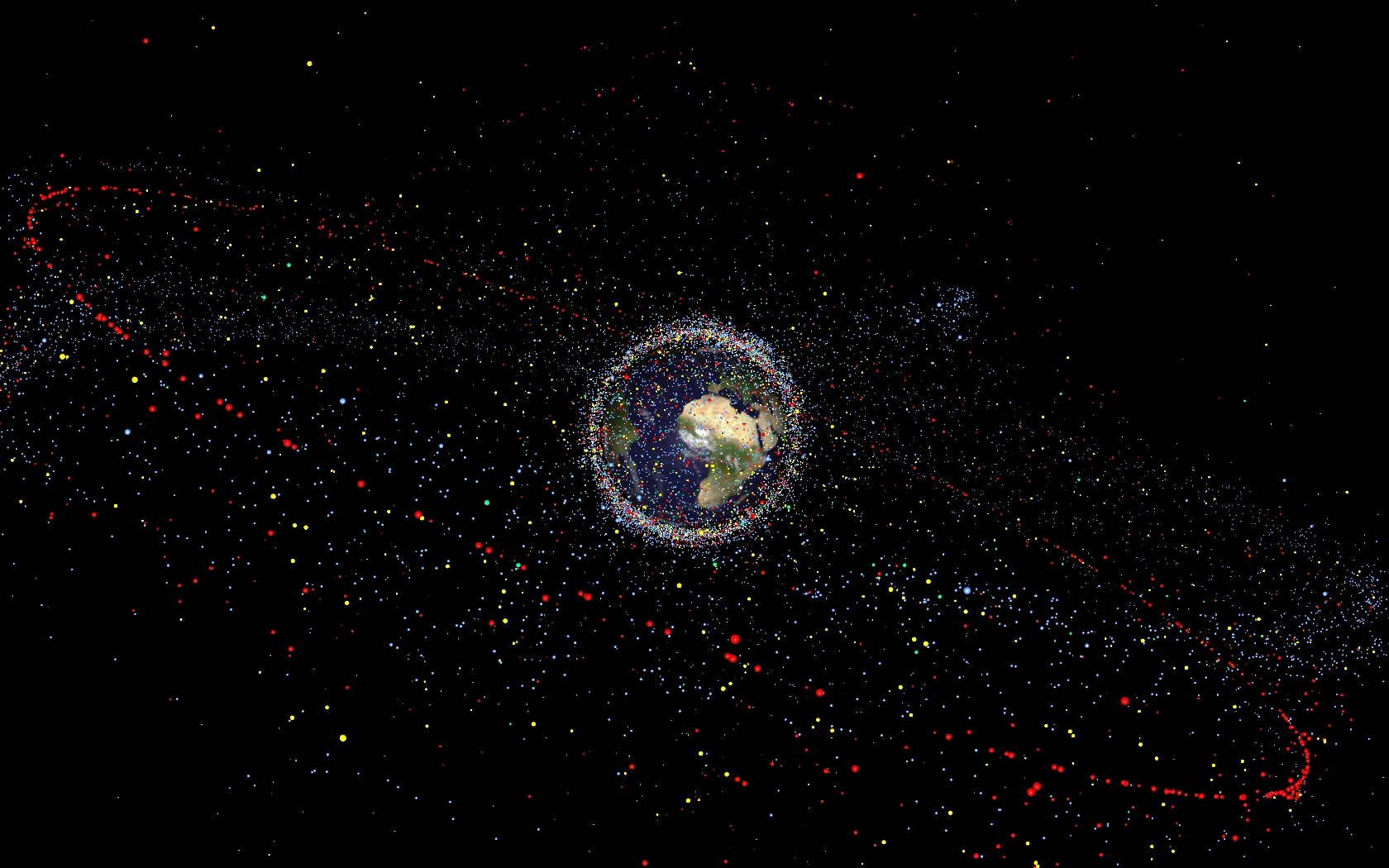On March 15, two groups of high school students presented their ideas on space debris capture at ESTEC’s Concurrent Design Facility (CDF) in Noordwijk, The Netherlands. Engineers from ESA’s Clean Space initiative and other areas of expertise were at hand to discuss the contemplated solutions with the students.

Distribution of debris around the Earth
Credits: ESA
Laura ten Bloemendal of the company Science [&] Technology, who initiated and supported the student projects, says “The two teams were given a prompt to think through engineering and design choices involved in capturing space debris, and to create a technical trade-off table leading to final design choices. The goal of this project is to give students experience working in groups on engineering challenges from an early age, and of course to inspire them to continue technical education with an interesting and relevant space topic.”
The students from the Thorbecke Scholengemeenschap of Zwolle, The Netherlands, presented an idea involving a spacecraft that can split into four parts that spread out, deploying a large net between them. Once the target satellite is fully enveloped, the four sub-spacecraft come back together, effectively trapping the satellite in the net. The re-united spacecraft would then initiate a de-orbit manoeuvre with its propulsion system, dragging the debris into the atmosphere to burn up.

The Thorbecke SG Technasium team presents its net-carrying sub-spacecraft capture solution in the ESTEC CDF.
Credits: ESA/Andrew Pickering
The second team, with students from Bonhoeffer College Enschede, The Netherlands, showed an alternative debris capturing spacecraft relying on long clamping arms with netting in between. Their design, called CoNDOR for ‘Coordinated Non-functional Debris Orbital Removal’ would grab a targeted satellite much like an octopus, then fire its rocket engines to push rather than pull the debris into the atmosphere. The group showed how it came to this solution through use of elaborate trade-off tables covering various detection methods, capture mechanisms and design options for power supply and propulsion (including nuclear solutions, which were fortunately discarded).

The Bonhoeffer College students explain how various trade-offs led them to their CoNDOR concept
Credits: ESA/Andrew Pickering
The ESA engineers were impressed by the various ideas that the students had come up with and especially the process through which they had come to the presented solutions. The assignments has clearly succeeded in giving the students a good understanding of the complexities involved in space debris removal and mission design in general. It was also good to see that for this new generation the need for clean space initiatives is a matter of fact, as the second team wrote in their report: “It is important that our spacecraft will be put into operation as soon as possible, because the growing problem of space debris will get out of hand if nothing is being done about it.”
The team of the technasium of the Thorbecke Scholengemeenschap consists of Kiet Bennema ten Brinke, Eline van der Sluis and Ewout van der Velde. The team of the technasium of Bonhoeffer College consists of Wouter Doedens, Pien Koenraadt and Monique Lamers.
Michel van Pelt, the author of the post, is an ESA Concurrent Design Facility team leader. He is involved in several clean space studies and is a strong supporter of the initiative.





Discussion: no comments